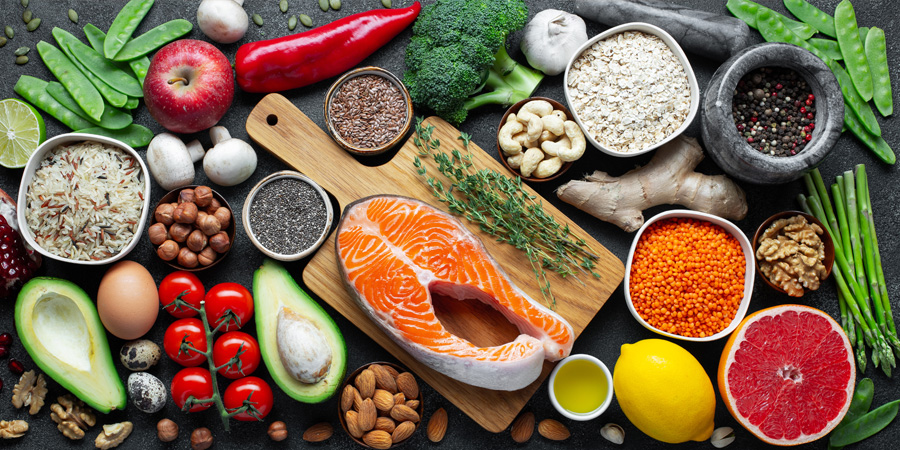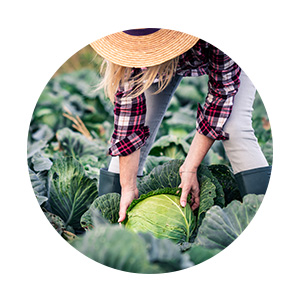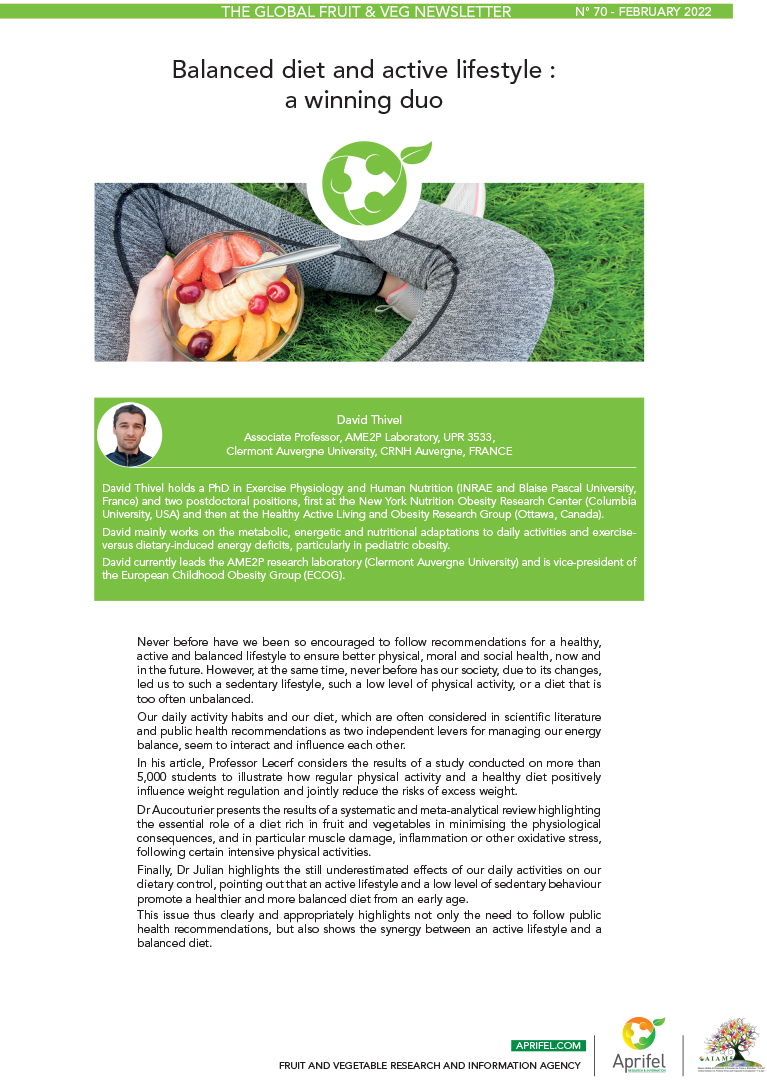Scientific news
Discover five recent scientific articles from our food, health and sustainability watch.


A Korean study (more than 67,000 adults followed for 10 years) analysed the role of some micronutrients and fruit and vegetables consumption on the metabolic syndrome. According to this work, a high consumption of vegetables (white and red) is associated with a lower risk of metabolic syndrome. For fruits, a lower risk is observed only in men. Finally, among adults with co-morbidities (type 2 diabetes, hypertension, cancers, cardiovascular diseases…), a lower risk of metabolic syndrome is observed with an increase of the daily intake of vitamin B2 and retinol, and with a high consumption of fruit and vegetables (white and red).

A team from the Bergen University (Norway) recently modelled the increase in life expectancy that could allow the improvement of our food consumption (Many data were used – meta-analyses, Global Burden Disease, mortality tables etc.). According to this work, the transition from a typical occidental diet to a nutritionally optimised diet, i.e.an increased consumption of legumes, whole grains, fruit and vegetables and nuts, and less red and processed meat, could increase life expectancy by more than 10 years among 20 year-olds. Benefits are more important in men (13 years) than woman (10.7 years). For older people, benefits could be smaller but substantials. The calculator “Food4HealthyLife”, the used tool, could be useful to clinicians, decision-makers and the general public to understand the impact of food choices on health.

A recent review of literature examined the available knowledge on the influence of organic agriculture on the environment, producers, consumers and society. Physic-chemical, nutritional and phytochemical qualities of conventional and organic plant foods were also compared. Authors of this work highlight that, despite the existence of debates on the subject, current scientific knowledge does not show a significant difference between conventional and organic food in terms of environmental impact, nutritional quality, safety and health effects. They identify 5 key findings: 1. organic farming uses natural pesticides and low-dose synthetic pesticides. 2. difficult control of aflatoxins and bacterial contamination is common in organic farming; 3. reduced plant yields are typical of the organic system; 4. The sensory and nutritional quality of organic food is not superior to conventional food. 5. The risk of food loss and price increase for organic products is higher than for conventional products.

A Malaysian team evaluated the effectiveness of a school-based intervention with 10-11 year-olds (83 children) and their parents. Over a 12-week period, participants attended five practical modules including cooking workshops and a nutrition education module (every 2 weeks). The availability of healthy foods at home and psychosocial factors associated with healthy meal preparation (knowledge, attitude, practice and self-efficacy) were assessed in the participants and a control group. In the participant group, the mean score of the four factors assessed and the quality of the meals were higher. Similarly, an increased availability of fruit, vegetables and healthy foods was also noted in the intervention group.

An increasing number of animal studies are looking at the gut-brain axis and showing a potential involvement of microbiota composition in the pathophysiology and progression of Alzheimer’s disease. Few studies of this type have been carried out in humans and none have considered diet as a determinant of the composition of the gut microbiota. A recent review of the literature examined the available knowledge. This work highlights that epidemiological studies show that a high consumption of fruit and vegetables could slow down the progression of Alzheimer’s disease. This effect would be linked to the presence of certain components such as fibres or polyphenols. The latter have antioxidant, anti-inflammatory and anti-apoptotic activities that could counterbalance the pathophysiological mechanisms of dementia. More broadly, the authors stress the need for further knowledge.

